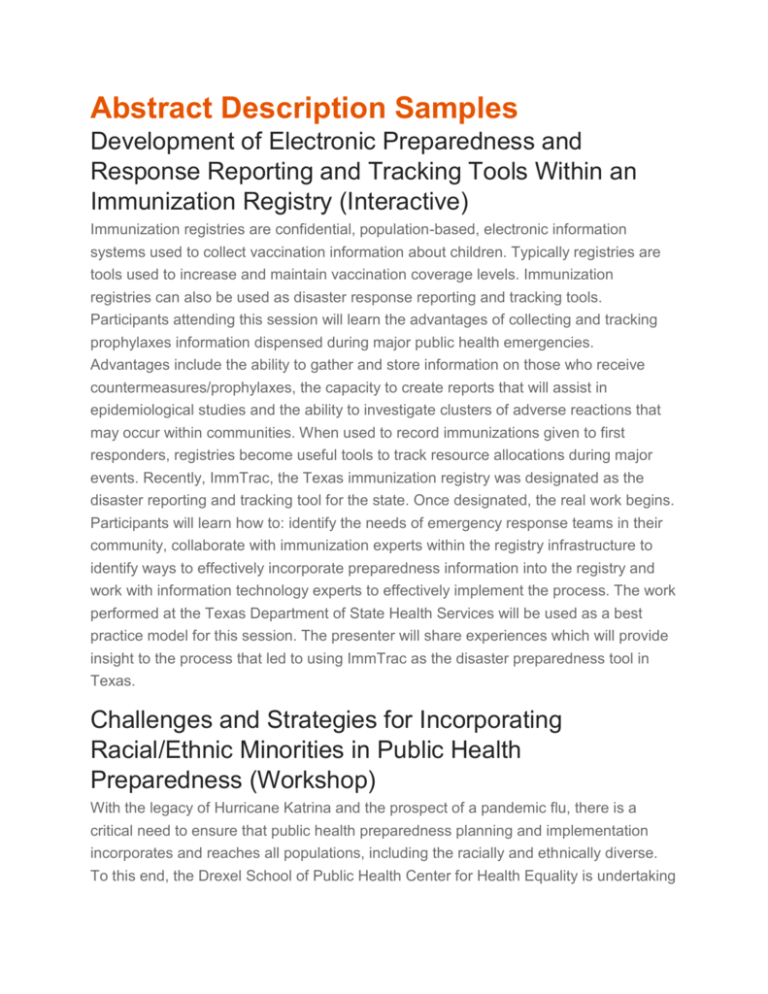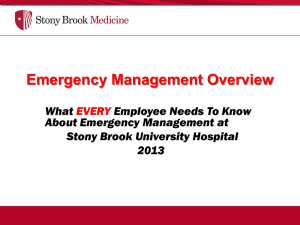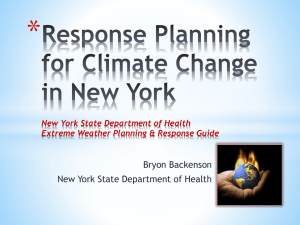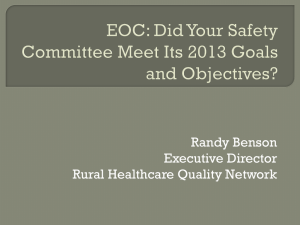Abstract Description Samples
advertisement

Abstract Description Samples Development of Electronic Preparedness and Response Reporting and Tracking Tools Within an Immunization Registry (Interactive) Immunization registries are confidential, population-based, electronic information systems used to collect vaccination information about children. Typically registries are tools used to increase and maintain vaccination coverage levels. Immunization registries can also be used as disaster response reporting and tracking tools. Participants attending this session will learn the advantages of collecting and tracking prophylaxes information dispensed during major public health emergencies. Advantages include the ability to gather and store information on those who receive countermeasures/prophylaxes, the capacity to create reports that will assist in epidemiological studies and the ability to investigate clusters of adverse reactions that may occur within communities. When used to record immunizations given to first responders, registries become useful tools to track resource allocations during major events. Recently, ImmTrac, the Texas immunization registry was designated as the disaster reporting and tracking tool for the state. Once designated, the real work begins. Participants will learn how to: identify the needs of emergency response teams in their community, collaborate with immunization experts within the registry infrastructure to identify ways to effectively incorporate preparedness information into the registry and work with information technology experts to effectively implement the process. The work performed at the Texas Department of State Health Services will be used as a best practice model for this session. The presenter will share experiences which will provide insight to the process that led to using ImmTrac as the disaster preparedness tool in Texas. Challenges and Strategies for Incorporating Racial/Ethnic Minorities in Public Health Preparedness (Workshop) With the legacy of Hurricane Katrina and the prospect of a pandemic flu, there is a critical need to ensure that public health preparedness planning and implementation incorporates and reaches all populations, including the racially and ethnically diverse. To this end, the Drexel School of Public Health Center for Health Equality is undertaking a series of initiatives to advance the integration of diverse communities in preparedness. With support from the HHS Office of Minority Health (OMH), the Center convened a broad-based panel of experts from 34 organizations representing emergency preparedness, health care, public health leadership and racial/ethnic minorities to develop the nation’s first blueprint including a national consensus statement, guiding principles and sector-specific recommendations on promising practices for preparedness in minority communities. Complementing this national effort, the Center, with support from The California Endowment, is conducting a systemic review of California’s state, local and community efforts as well as convening local panels to identify leading initiatives, gaps and challenges to reaching minorities in emergencies. Additionally, with support from OMH, the Center launched the nation’s first online clearinghouse and exchange site to facilitate communication, collaboration and coordination of resources focused on minority preparedness. This session will: present findings from the national panel, focusing specifically on promising practices for incorporating minorities in preparedness across sectors; provide a snapshot of the current status of efforts and challenges in California (a state leading in minority preparedness efforts); and provide a brief tutorial on using our website as a tool for advancing preparedness for minorities. Preparedness Training Using Interactive Learning Methods (Poster) The Nebraska Biocontainment Unit includes professionals from the Nebraska Department of Health and Human Services, the University of Nebraska Medical Center (UNMC), and its collaborating hospital, The Nebraska Medical Center, who work together as an interdisciplinary team. This unit is designed for isolating patients with highly infectious, dangerous illnesses. The biocontainment unit team is composed of care providers working their routine full-time positions in the hospital (eg. ICU, ER) who are on-call for the unit, meet specialized biopreparedness training competencies, and then participate in monthly meetings and quarterly drills specific to the unit. The simulation support for the quarterly drills is provided through a UNMC College of Nursing grant called HEROES (Healthcare and Emergency Responder Organization Education through Simulation). High fidelity simulation equipment from the grant also travels in a mobile simulation unit for the enhancement of drills and exercises with Nebraska’s critical access hospitals, medical centers, and emergency responders. The grant website provides access to educational simulations, games, and videos related to emergency preparedness. It is available at ww.onlineheroes.org. The Nebraska Biocontainment Unit and HEROES grant have become a strong collaborative team. Some examples of education projects from this collaborative team include live, local presentations; posters to teach about safely donning and doffing personal protective equipment; and development of on-line instructional videos on the HEROES website for just-in-time training. This session will review and show examples of the interactive preparedness learning materials currently available and encourage participants to share their educational needs for the future.





